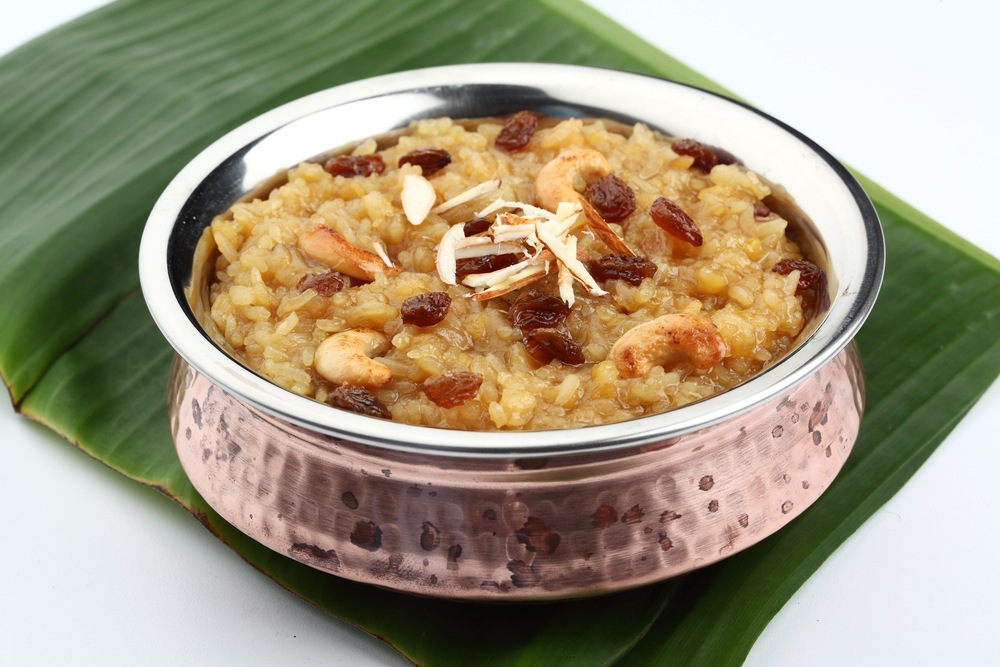The term ‘Pongal’ in Tamil means “to boil”, and this festival is celebrated as a thanksgiving ceremony for the year’s harvest
One of the most important celebrations for the people of Tamil Nadu is the harvest festival of Pongal, celebrated in mid-January. The term ‘Pongal’ in Tamil means “to boil”, and this festival is celebrated as a thanksgiving ceremony for the year’s harvest. Pongal is also the name of a delicious sweet made of rice, lentils, and jaggery; cooking and consuming this sweet Pongal is an intrinsic part of the festival.
The festival is primarily dedicated to Surya, the Sun God, as an act of thanksgiving for abundant crops and a year of plenty. The deep connection of Pongal to the sun also arises from the timing – the festival marks the end of the winter solstice and the start of the sun’s journey northwards. Interestingly, Pongal also corresponds to a harvest festival that is celebrated all over India, the festival of Makara Sankranti.
Like most Indian festivals, Pongal to is a time of visiting friends and family, gifting, decorating the homes, cooking special foods and offering prayers in the homes and temples. Additionally, people look forward to creating and enjoying very elaborate kolams (or floor rangoli artworks made of white rice powder).
In Tamil Nadu, there are four important days associated with the festival.
The first day – Bhogi Pongal
Bhogi Pongal is the day of cleaning and decorating the homes. Especially honored on this day is Lord Indra, the god of rain; it is crucial to pray for a year of good rains. An important ritual of this day is to discard old and useless household things, which are traditionally burnt in fires fed by cowdung cakes and woods.
The second day – Thai Pongal
This is the main day of the Festival, dedicated to the Sun God. It is celebrated with the family, and also called Surya Pongal. The special ritual is to boil together rice and milk in an earthen pot outdoors. As the rice and milk boils over, a conch is blown and the cry of “Pongalo Pongal” is heard. The wish is “may this rice boil over”, or in other words may it herald a year of plenty and prosperity. Another important aspect of this day is the drawing of kolams.
The third day – Mattu Pongal
Mattu Pongal is the day where the cows are celebrated, and decorated with garlands and beads. The day is connected to a legend around Lord Shiva and his bull Basava.
The fourth day – Kaanum Pongal
Kaanum Pongal is the last day of the festival. The important ritual of this day revolves around placing out in the courtyard, the leftover sweet pongal as well as other items such as betel leaves, betel nuts and sugar cane. The ritual is performed by the women of the household in the name of their brothers, and they ask for the prosperity of the family.
Here is a Pongal special recipe you must give it a try at home.
Sakkara Pongal
One of the favorite dishes during the Pongal festival is the eponymously named sweet Pongal known as sakkarai pongal.
Ingredients
- ½ cup of rice
- ⅓ cup moong dal
- 5 green cardamoms
- 1 clove
- ½ cup (about 120 grams) tightly packed jaggery
- ¼ cup jaggery – optional for extra sweetness
- Pinch of edible camphor
- 4-5 tablespoons of ghee
- 18-20 cashew nuts
- 1 1/2 heaped tablespoon raisins
Preparation
Step 1 – Pick the rice and moong dal to get rid of stones. Heat a small Kadai (wok), add the rice and moong dal. Stir till aromatic, but taking great care not to brown. Transfer to another pan, wash the rice and moong dal a couple of times.
Step 2 – Transfer to a pressure cooker, with about 3 cups water, cook on a medium flame for 10-14 minutes, and 8-10 whistles*. Once the pressure has settled on its own, remove the lid to check; the consistency should be like khichdi. Lightly mash with a spoon and keep aside.
For the Jaggery sauce:
Step 3 – Crush seeds of 5 green cardamoms and 1 clove.
Step 4 – Chop up the half-cup of jaggery; for more sweetness, add the extra jaggery.
Step 5 – Place ½ cup of water in a pan on the fire and add the jaggery. Melt the jaggery completely to form a smooth, dark liquid. Thicken slightly.
Step 6 – Add the jaggery to the rice and moong dal mixture. Add the crushed green cardamoms and clove, as well as the pinch of edible camphor.
Step 7 – Heat the ghee and lightly brown the cashew nuts. Add the raisins and fry till they plump up.
Step 8 – Keep aside a few for garnish. Immediately transfer the rest to the rice-lentil-jaggery mixture; and mix well.
Step 9 – The sweet Pongal can be served hot or warm; garnish the Pongal with the fried cashews and raisins before serving.
(* Do note: the amount of water to be added depends not just on the desired consistency but also on the quality of moong dal. If you are familiar with the type and cooking time of the moong dal you are using, adjust water accordingly. For example if you are using the type that cooks quickly, then add between 2 – 2 1/2 cups of water only, and cook for 2 to 3 whistles)









Hi,
I am Raj Hiremath, age 56 years. I am a member of this group. A civil engineer by profession. I am looking for administration/HR jobs Or any other jobs in Pune to support my family.
Request if any of you can do the needful.
I am sorry if this platform is not meant for my requirement.
Regards,
Raj Hiremath.
9970063876
Comments are closed.